
The sound of a dark black grinding stone pounding spices into a paste still plays in my head just as I heard it many years ago. I’m not sure what they were putting in it to turn it that bright orange but it was hypnotic for us children, who were otherwise more interested in digging up earthworms and feeling brave. That smell – pungent and earthy. That sound. If you know, can you hear it?
Vinanti would make the masala for the curry we would eat for lunch that day. One by one she would add the spices to flat grinding slab along with garlic and bright red chillies we weren’t allowed to touch. Both hands on the grinding stone, she would roll it over the spices turning it into paste. One hand would leave the stone to pat the masala and then gather it together. It was like a game for young eyes. That squishy, wet sound reminiscent of the mud we played in. Rolling over and over and dabbing water when it felt too dry, she finally glided her hands over and scooped up the masala on a plate. It was ready. She took it in the kitchen. She would then wash the grinding stone, collect what water remained in a bowl and take it away. Maybe that would also go in the curry? I forget what happened beyond that moment.
My mother would do the same at our house, but our grinding “equipment” was smaller. It still felt the same. I heard the same sounds and felt the same weight when I lifted the stone from the kitchen counter to the floor where the masalas were made. Years later, we bought a machine to do the work. It took up more floor space than we expected but it made enough masala for us to freeze. I would stand over the mechanised grinder and stick my fingers on one of the two wheels as they would turn in opposite directions. It was slow enough not to hurt me and fast enough to leave me mesmerised. The sound it made was almost the same but everything happened much faster. The process seemed to have less heart but I’m sure my parents lives were made easier. Now, they can do all of the above in a fraction of the time and minimal counter space. High-speed blenders for the win.
For many Indian households (even abroad – I’ve seen it!), cooking is an everyday deal. As kids, food magically appeared. We barely knew how it all came together but once in a while we would see it happen. As grown-ups, we reach with all we got to those moments, hoping to have them again but realising that things have changed. Oh boy have they ever.
Food is my family’s legacy. It’s a way to relive those moments we though little of as children. I didn’t learn how to cook most of what my family fed us every day but I know so many stories behind it. I’ve seen it being done and when I step into my kitchen, it’s almost like I know exactly what sounds to hear for and the smells that will take me back. Food will always be my way of staying connected to my family. It’s U Edwin and A Nancy’s boondi raita. It’s in U Edgar’s BEST fish curry. It’s in my dad’s sugar chapatis and cookie cutter puris. It’s in my mother’s after-work bread pudding. It’s in Grandma’s alsande ros and my grandfather’s (and great grandparents’) dining table where we sat- Jane, him, A Pacy and me – and drank tea out of our favourite cups.
I’m going home in less than a month. I can’t wait to hear it all again.
Have a happy Holiday weekend, friends.
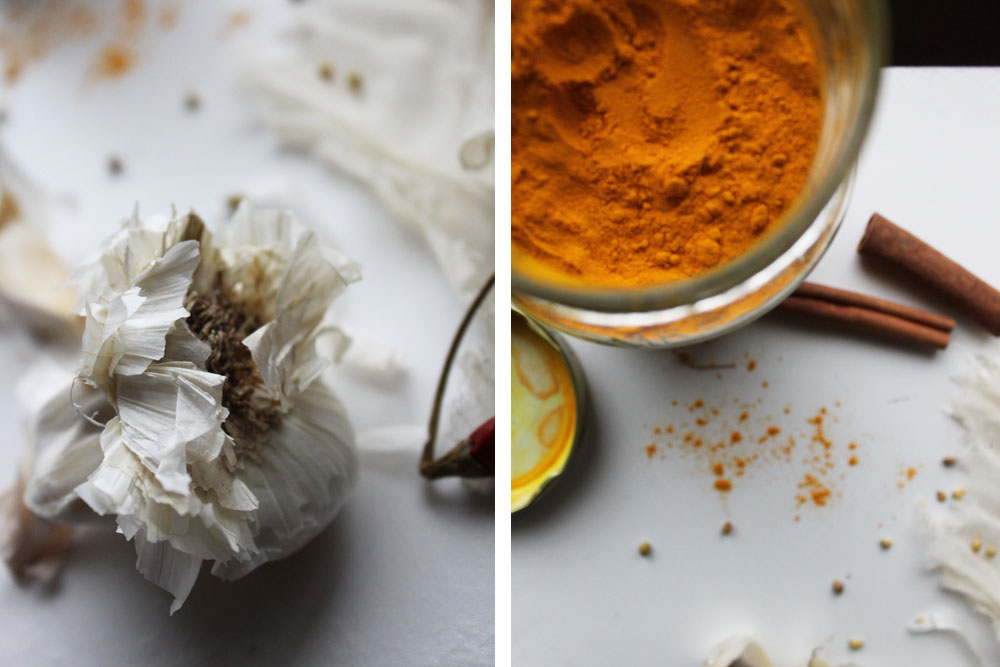

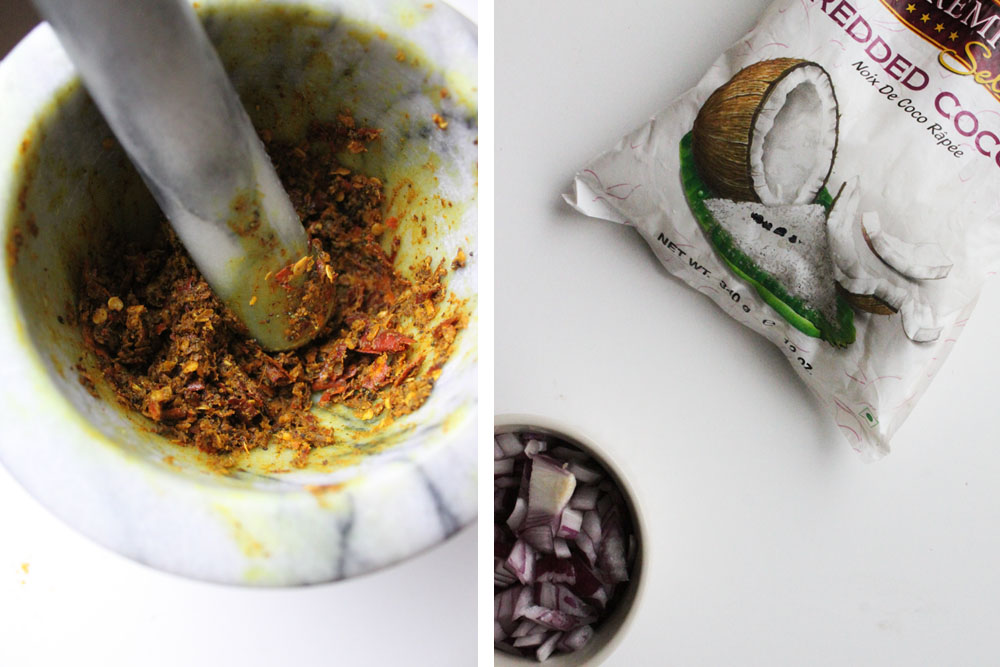


Chicken xacuti
Pronounced sha-koo-thi, xacuti is a coconut-based curry that is popular in the state of India I’m from – Goa. I’m sure you’ve heard me say this before but we eat a lot of coconut on the South-West coast of India. This masala can be used in the same way with meats like lamb, and it can be made vegetarian and just as wholesome with ingredients like mushrooms, black-eyed peas or garbanzo beans. It tastes especially delicious the next day when scrambled in with eggs and eaten with a fluffy roll of bread (this is one of Goa’s most famous street foods).
This recipe was made with help from my mother, who sent me the recipe from one of her cookbooks as soon as I asked her for it. Thanks, ma!
Ingredients
Adapted from Cook in Style by Sr M. Laura and a quick ingredients list and how-to from my friend, Romaldin
For the chicken marinade
- 1/2 kg or 1.30 lbs boneless, skinless chicken thighs cut into 3″-4″ pieces
- 1 tbsp fresh grated ginger
- 1 tbsp grated garlic
- 1/2 tsp salt, to taste
Place all the pieces of chicken in a medium-sized bowl and cover with the ginger, garlic and salt. Mix well -using you hands – so that the ginger-garlic reaches every nook of the meat. Cover the bowl and let it in the fridge for an hour or more. You can do this step the night before if you have time.
For the xacuti masala
- 1/2 tbsp + 1/2 tbsp ghee, divided
- 1 tbsp whole coriander seeds
- 4-5 peppercorns
- 6 cloves
- 1/4 tbsp anise seeds or fennel seeds
- 1/2 tbsp poppy seeds
- 1/2 piece of nutmeg
- 1 inch piece of cinnamon
- 7 dried chile de arbol (the original recipe calls for Kashmiri chillis, which can be found at Indian grocery stores)
- 1/2 tbsp ground turmeric (if using whole turmeric, roast with the spices. If not, add it later while grinding the spices)
- 1 cup fresh or frozen grated coconut
- 3/4 cup red onion, finely diced
Add 1/2 tbsp of ghee to a cast iron skillet and place the skillet on medium heat. Once the ghee melts, toss in all the spices (up till the chile de arbol in the ingredients list). Stir them frequently, coating with the ghee and roast the spices on the pan for 3-5 minutes. You’ll know the spices are ready to come off the heat when they start to smell toasty and fragrant.
Place all the spices into the mortar and grind them to a crumbly powder. Alternatively, you can also use a spice grinder but I don’t own one. Scoop the spice mixture into a small bowl and clean the mortar with a tbsp of water. Add that water into the bowl.
Put the skillet back on medium heat and add 1/2 tbsp of ghee to it. Once the ghee melts, add the coconut and red onion and stir every 30 seconds. Toast the coconut for 5-7 minutes until the coconut dries a bit and browns in parts. Put the coconut-onion mixture into another bowl.
Grind the spice mix with the coconut mixture using the mortar and pestle (or spice grinder) until it turns into a smooth paste/masala. Add a tbsp of water if you need more help to get the masala going. Scoop the masala into a bowl.
You can make this xacuti masala a day ahead. Keep it covered and refrigerated.
To cook the chicken xacuti
- 1 tbsp ghee
- 1/2 cup red onion, finely diced
- 1 serrano chilli (optional)
- Marinated chicken
- Xacuti masala paste
- 1/2 cup thin coconut milk
- 1 tbsp tamarind paste (Make your own!)
- Salt to taste
- Fresh cilantro to garnish
Heat the ghee in a large pot over medium-high heat. Add the onions and serrano chilli (is using) and stir until the onion is cooked and slightly browned in parts. This should take about 5-7 minutes.
Once the onions are ready, add the marinated chicken pieces on top of the onions. Turn them once or twice, letting them cook evenly on all sides.
Add the masala paste and 1/2 cup coconut milk to the chicken and stir well to combine. Let the pot come to a quick simmer then turn down the heat. The chicken should be at a slow simmer. Cook uncovered on this low heat for 15-20 minutes, giving it a big stir every now and then.
Right before taking it off the heat, add the tamarind paste and salt to taste. Mix one last time and garnish with cilantro. Serve the xacuti with steamed rice and your favorite Indian pickle (I highly recommend gor keri, a sweet raw mango pickle).
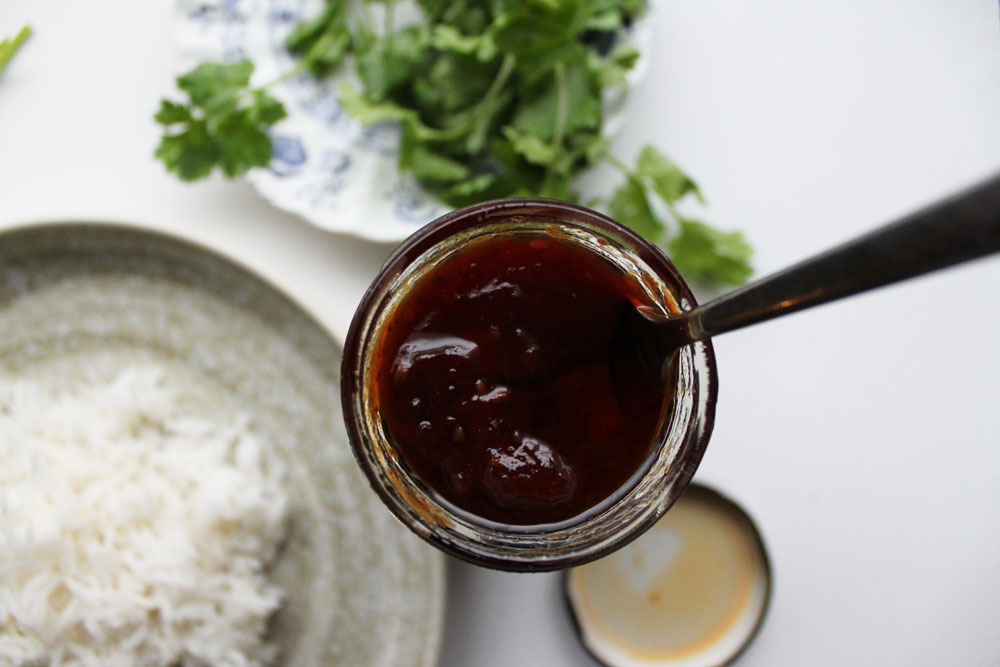
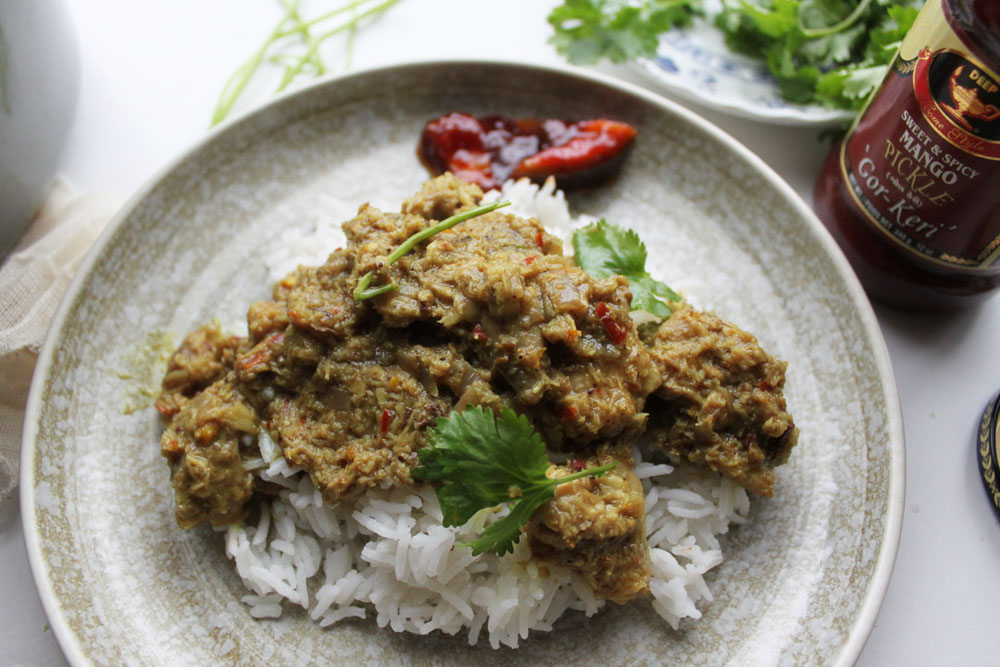

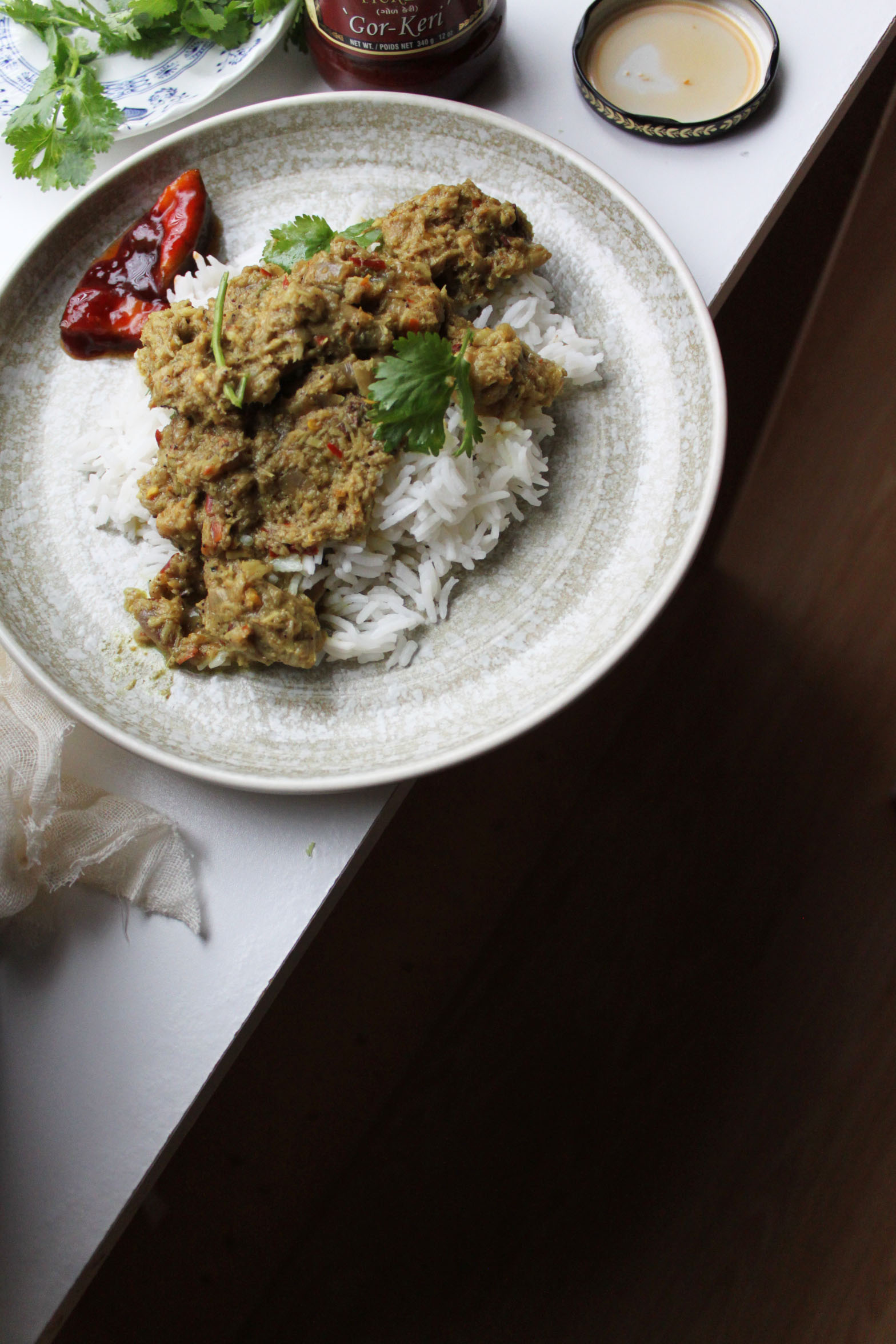
Gosh, this looks so good! I’m definitely going to have to try it out. Hope you have a good trip back home! There’s nothing like returning back to where you started is there? To me going to India always feels like I’m going back to the past, thanks to all the nostalgia that’s tied to it.
I can’t wait to move back one day. Just. Can’t. Wait.